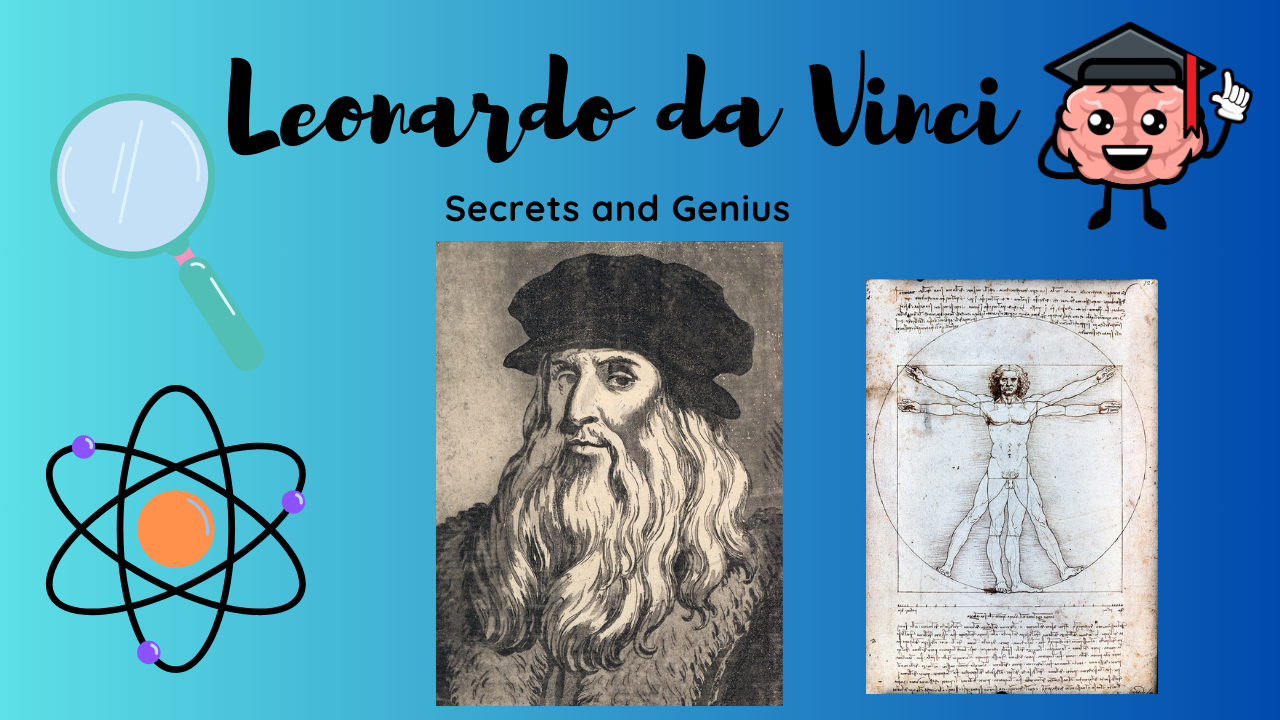Leonardo da Vinci, born on April 15, 1452, in Vinci, Italy, was a polymath whose intellect and artistic talents spanned multiple disciplines. He is renowned as a painter, sculptor, architect, musician, scientist, mathematician, engineer, inventor, anatomist, geologist, cartographer, botanist, and writer. His diverse interests and accomplishments make him the quintessential “Renaissance Man,” embodying the spirit of the Renaissance era that emphasized a return to classical knowledge and the flourishing of human creativity.
Early Life and Education of Leonardo da Vinci
Leonardo was the illegitimate son of a notary, Ser Piero, and a peasant woman named Caterina. Despite his illegitimacy, Leonardo received a comprehensive education that included Latin, mathematics, and geometry. At the age of 14, he began an apprenticeship with the artist Andrea del Verrocchio in Florence, where he honed his skills in painting and sculpture.
Artistic Masterpieces of Leonardo da Vinci
Leonardo’s artistic works are celebrated for their intricate detail, mastery of light and shadow (chiaroscuro), and profound emotional depth. Two of his most famous paintings are:
- The Last Supper: Painted between 1495 and 1498 for the convent of Santa Maria delle Grazie in Milan, this mural depicts the moment Jesus announces that one of his disciples will betray him. The composition and use of perspective create a dramatic narrative that has captivated viewers for centuries.
- Mona Lisa: Painted between 1503 and 1506, the Mona Lisa is renowned for its enigmatic smile and detailed background. Housed in the Louvre Museum in Paris, it remains one of the most recognized and studied works of art in the world.
Scientific and Engineering Contributions
Leonardo’s notebooks reveal his insatiable curiosity and innovative thinking. He meticulously documented his studies on anatomy, flight, optics, and engineering. Some notable contributions include:
- Anatomy: Leonardo’s dissections of human cadavers led to detailed anatomical drawings that were far ahead of their time, enhancing the understanding of the human body.
- Flight: Fascinated by the possibility of human flight, Leonardo designed various flying machines, including an ornithopter and a helicopter-like device.
- Engineering: His designs for bridges, military weapons, and hydraulic pumps showcased his advanced understanding of mechanics and engineering principles.
Interesting Facts about Leonardo da Vinci
- Ambidextrous: Leonardo was ambidextrous and could write with both hands. He often wrote in mirror script, making his notes challenging to read without a mirror.
- Vegetarian: Leonardo was a known vegetarian, advocating for the humane treatment of animals.
- Ahead of His Time: Many of Leonardo’s inventions were not feasible during his lifetime due to the limitations of contemporary materials and technology.
- Unfinished Works: Despite his prodigious talent, Leonardo left many of his works unfinished, including numerous paintings and sculptures.
Behaviors and Personal Traits
Leonardo was known for his eccentric personality and unconventional behavior:
- Curiosity: His relentless curiosity drove him to explore a wide range of subjects, often leading to groundbreaking discoveries.
- Meticulousness: Leonardo was meticulous and detail-oriented, often obsessing over the perfection of his work, which contributed to his many unfinished projects.
- Solitude: He preferred solitude and was known to isolate himself while working on his studies and inventions.
Controversies
Leonardo’s life was not without controversy:
- Accusation of Sodomy: In 1476, Leonardo and several young companions were accused of sodomy, a serious crime in Renaissance Florence. Although the charges were ultimately dismissed due to lack of evidence, the incident cast a shadow over his reputation.
- Conflict with the Church: Leonardo’s scientific inquiries and dissections of human bodies sometimes brought him into conflict with the Church, which viewed such practices with suspicion.
- Political Tensions: Leonardo worked for various patrons, including the powerful Medici family and the Duke of Milan, Ludovico Sforza. Navigating these political relationships could be fraught with tension and danger.
Legacy
Leonardo da Vinci’s legacy transcends time and discipline. His artistic masterpieces continue to inspire awe, while his scientific inquiries laid the groundwork for future discoveries. Leonardo’s life epitomizes the boundless potential of human creativity and intellectual exploration, making him one of history’s most fascinating and enduring figures.
In conclusion, Leonardo da Vinci’s life was a tapestry of art, science, and innovation, woven together by his insatiable curiosity and unmatched genius. His works and ideas continue to influence and inspire, underscoring the timeless impact of his contributions to humanity.



